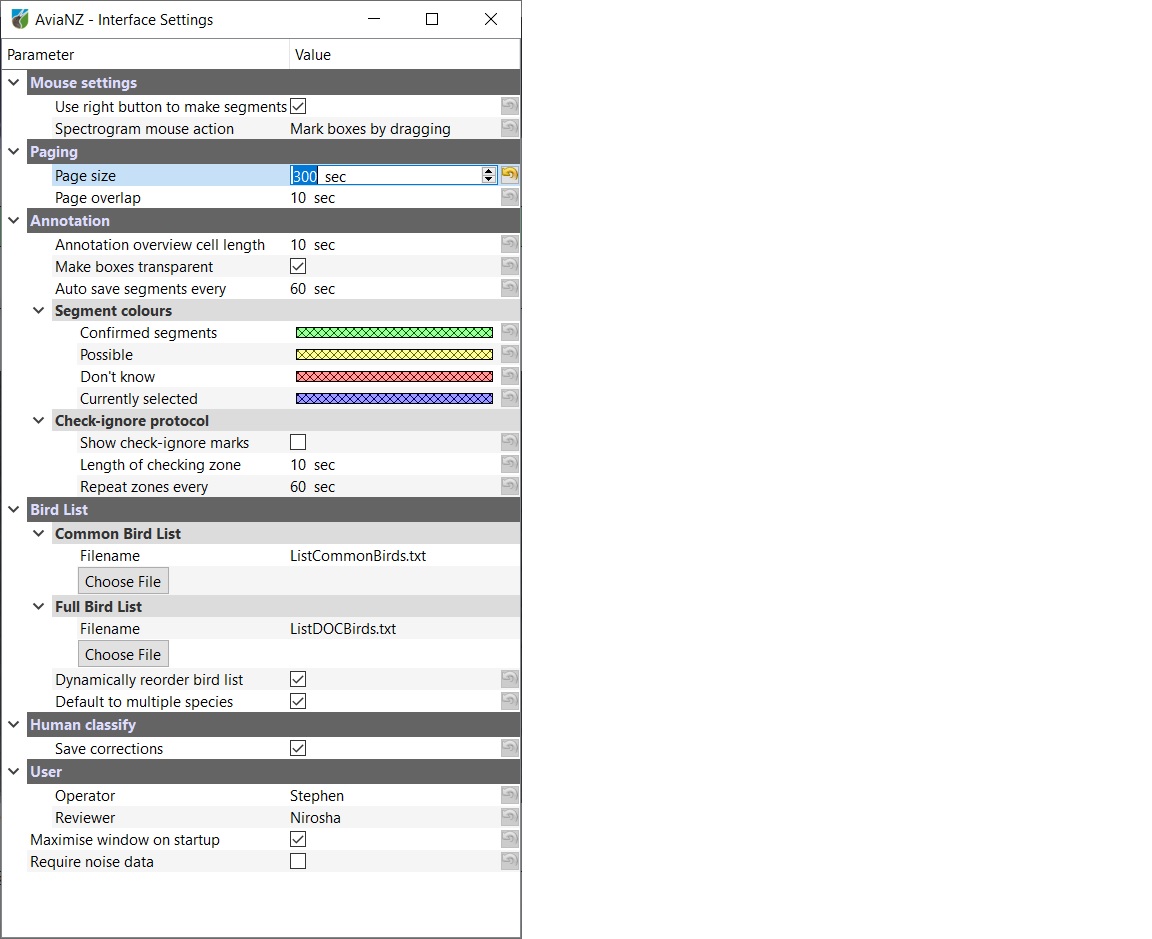Yes, you can train a filter to detect your target species.
Check the list of existing filters first. To build a new one, refer Training a species recogniser in the Manual.

Yes you can, Upload your filter.

Manual Processing and Batch Processing modes in AviaNZ supports audio files of any size because it works on pages (sections). E.g. when you open a long recording in AviaNZ it opens the first 5 min by default, however you can change the page size. Refer Interface Settings in the Manual.


Yes. In the Manual Processing mode, when you create a new segment, a drop-down menu will appear asking you to choose a label for that segment.
- To choose the type of bird, click on the name
- If the species isn’t in the list, move to ‘Other’
- If it isn’t in the second list, at the bottom of that list is a selectable box (it probably says ‘Albatross’). Clicking on it provides the complete list of birds
- If there is something missing from there, then only choose Other’ from it, which is at the very end. It will ask you to enter a name, as Genus (Species); e.g., ‘Kiwi (Little Spotted)’. If there is only a single example of the genus, you can miss out the species, e.g., ‘Kakapo’
- New name you add will then appear in the list

Yes, you can use the AviaNZ splitter to split the recordings, it will also preserve any existing annotations. You will find it in the manual mode, under "Utilities -> Split WAV/DATA files".

AviaNZ does not support 32 bit computers, please use a 64 bit computer.

It's normal that the title bar of the window updates to 'AviaNZ - Batch Processing (Not Responding)' during the time that the program automatically finds the target sounds in a batch of recordings, still the program is doing all the computations and you can see some updates on the console (black window). It takes a long time to finish the batch process depending on how big the batch.

The reviewed work will be saved. The excels will get updated with both reviewed and non-reviewed segments.

If the segment is much longer than the target call, we recommend marking it as ![]() and opening it in manual mode later - this way, you can edit its borders to match the actual call.
and opening it in manual mode later - this way, you can edit its borders to match the actual call.

Yes, the Manual Processing mode displays the file list with colored icons to identify what level of annotations is present in each file. By default,
- Green: All good, these files got manually made segments and segments got confirmed with Review Batch Results
- Yellow: Need attention, there are uncertain segments. Open the file and follow the bar below the Overview spectrogrm to quickly locate the segment
- Red: Need attention because there are segments with 'Don't Know' label
- White: Those recordings do not have any annotation

Annotating the individual calls is helpful for the algorithem to understand what is a target call and what are the other noises.

Older, or low-end laptop, CPUs are not supported and will produce this error. (This is because they do not include AVX instructions required for tensorflow.) It is still possible to use AviaNZ with such CPUs, but you will have to install a non-AVX version of tensorflow (see https://github.com/fo40225/tensorflow-windows-wheel) and then follow our AviaNZ installation from source instructions. Expect poor performance. Known CPUs with this issue:
- Intel Pentium Gold and Silver series
- Intel Celeron series
- Intel Atom series
- All pre-2011 CPUs

Please report to us here. We will fix it in the next version.



